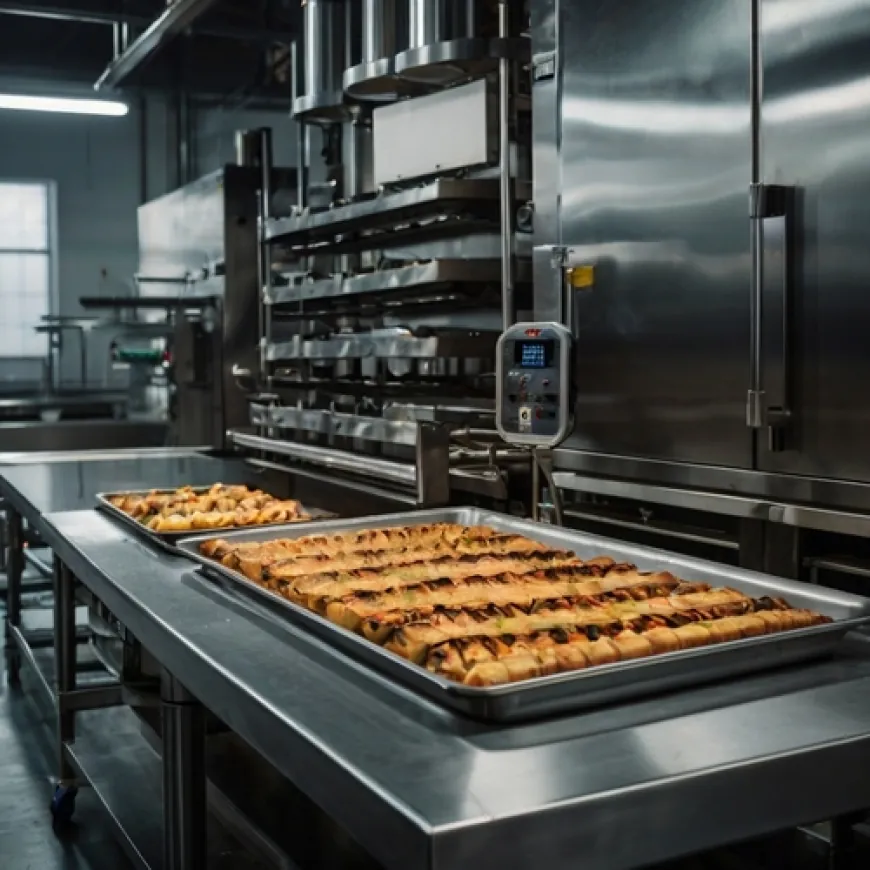Trends and Growth in the Food Service Equipment Market 2031
The food service equipment market is poised for significant growth by 2031, driven by the rapid expansion of the food and beverage industry globally

The food service equipment market is poised for significant growth by 2031, driven by the rapid expansion of the food and beverage industry globally. As consumers increasingly seek convenience and quality in their dining experiences, the demand for advanced food service equipment has surged. This growth is influenced by several factors, including technological innovations, changes in consumer behavior, and the expansion of the hospitality sector.

Technological Innovations
One of the key trends shaping the food service equipment market is the integration of advanced technology. Smart kitchen equipment that incorporates IoT (Internet of Things) technology is becoming increasingly prevalent. These devices enable real-time monitoring of kitchen operations, helping restaurant owners optimize energy consumption and improve efficiency. For instance, smart ovens and refrigerators can send alerts about maintenance needs or monitor food temperatures, ensuring food safety and reducing waste.
Moreover, the rise of automation in food service is transforming traditional kitchen operations. Equipment such as robotic chefs and automated dishwashers streamline processes, allowing staff to focus on customer service. This shift not only enhances operational efficiency but also addresses labor shortages faced by the industry.
Evolving Consumer Preferences
Changing consumer preferences are also influencing the food service equipment market. The increasing demand for healthy and sustainable dining options has prompted restaurants and food service providers to invest in equipment that supports these trends. For example, energy-efficient cooking appliances and eco-friendly food storage solutions are gaining traction as businesses seek to align with sustainability goals.
Additionally, the growth of delivery and takeout services has necessitated the development of specialized equipment that maintains food quality during transportation. Packaging solutions that keep food fresh and safe while being delivered to consumers' doorsteps are becoming crucial in the food service sector.
Expansion of the Hospitality Sector
The resurgence of the hospitality sector post-pandemic is another driving force behind the food service equipment market. As travel restrictions ease and tourism rebounds, hotels and restaurants are upgrading their facilities to meet the expectations of modern consumers. Investments in high-quality kitchen equipment and dining furniture are essential to attract customers and enhance their overall dining experience.
Furthermore, the increasing number of food service outlets, including fast-casual dining and food trucks, is expanding the market landscape. These establishments require versatile and compact food service equipment that can cater to diverse culinary needs while maximizing space efficiency.
Conclusion
In conclusion, the food service equipment market is on a growth trajectory, driven by technological advancements, evolving consumer preferences, and the expansion of the hospitality sector. By 2031, businesses that adapt to these changes and invest in innovative equipment will be better positioned to thrive in this competitive landscape. As the demand for quality and convenience in food service continues to rise, the importance of reliable and efficient equipment cannot be overstated.












